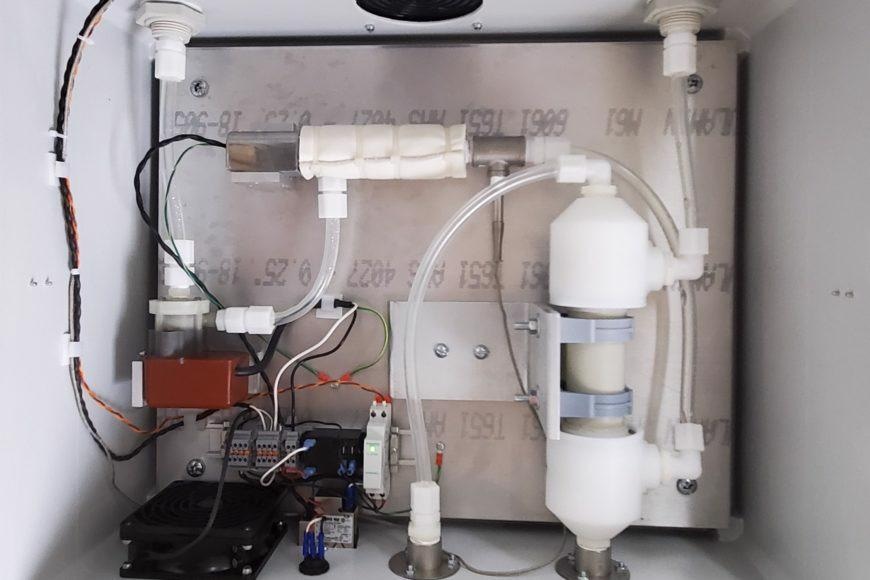Gas humidifiers are machines designed to create an exact relative humidity (RH) by adding water vapor to a gas flow. The relative humidity is the ratio of partial pressure of water vapor (pH2O) present in the gas to the equilibrium vapor pressure at saturation at a specific temperature.

Image Credit: Environics, Inc.
Gas humidifiers are frequently used to humidify gases with no water-soluble components. They also humidify the air that is required in another process, such as gas blending.
Applications of Gas Humidifiers
Gas humidifiers simulate real-world environments in both calibration applications and research. They are frequently used to mimic human breath, emissions, exhaust or ambient conditions.
A gas humidifier allows the operator to add exact relative humidity levels to a blend of gases, replicating an extensive range of conditions in which gas samples contain humidity.
Water to Gas Humidifiers
At Environics, Nafion™ tubing is used in water-to-gas humidifiers. These instruments allow water to move through the Nafion membrane, gaining equilibrium of the partial pressure of water vapor on either side of the membrane.
On either side of the membrane, there is a difference in humidity. This results in the incoming, dry gas stream being humidified whilst it flows over the tubing and the water flowing through in the opposite direction. The only gases that can be humidified using this method are those that are unable to cross the membrane.
Gas humidifiers come with an array of lengths and number of Nafion tubes as standard. This means, depending upon the RH and flow rate required, numerous surface areas are reachable. However, ranges are commonly between 5-95% relative humidity.
The temperature needs to remain stable if repeatable and stable RH is to be attained.
In combination with a humidifier’s water reservoir, a water-circulating pump is normally used. As an endothermic process, heat dissipates from the water while the gas is humidified. To avoid the production of higher humidity levels, the pump is required to prevent the water from getting too cold.
Bubbler Gas Humidifiers
Another method of humidification is bubble gas humidifiers, which allow dry gases to bubble through water at room temperature. These gas humidifiers generate small bubbles of gas which in turn enhances the contact surface, offering the maximum humidity for the bubbles to pick up.
Gas-to-Gas Humidifiers
Gas-to-gas humidifiers are frequently used for the humidification of particle streams, aerosol streams, calibration gases and gases containing water-soluble components.
Gas-to-gas humidifiers operate by using water vapor outside the tubing, which is transferred selectively into a gas stream that is flowing through the tubing. To achieve this, the humid gas is pumped around in the opposite direction to the current of the gas stream.
Gas Humidifiers and Environics
Environics is able to design standalone gas humidifiers, along with dilution or gas mixing systems that include a gas humidifier. Both units can be designed for an adjustable or fixed relative humidity level.
Acknowledgments
Produced using materials originally authored by Mark Griswold from Environics.

This information has been sourced, reviewed and adapted from materials provided by Environics, Inc.
For more information on this source, please visit Environics, Inc.